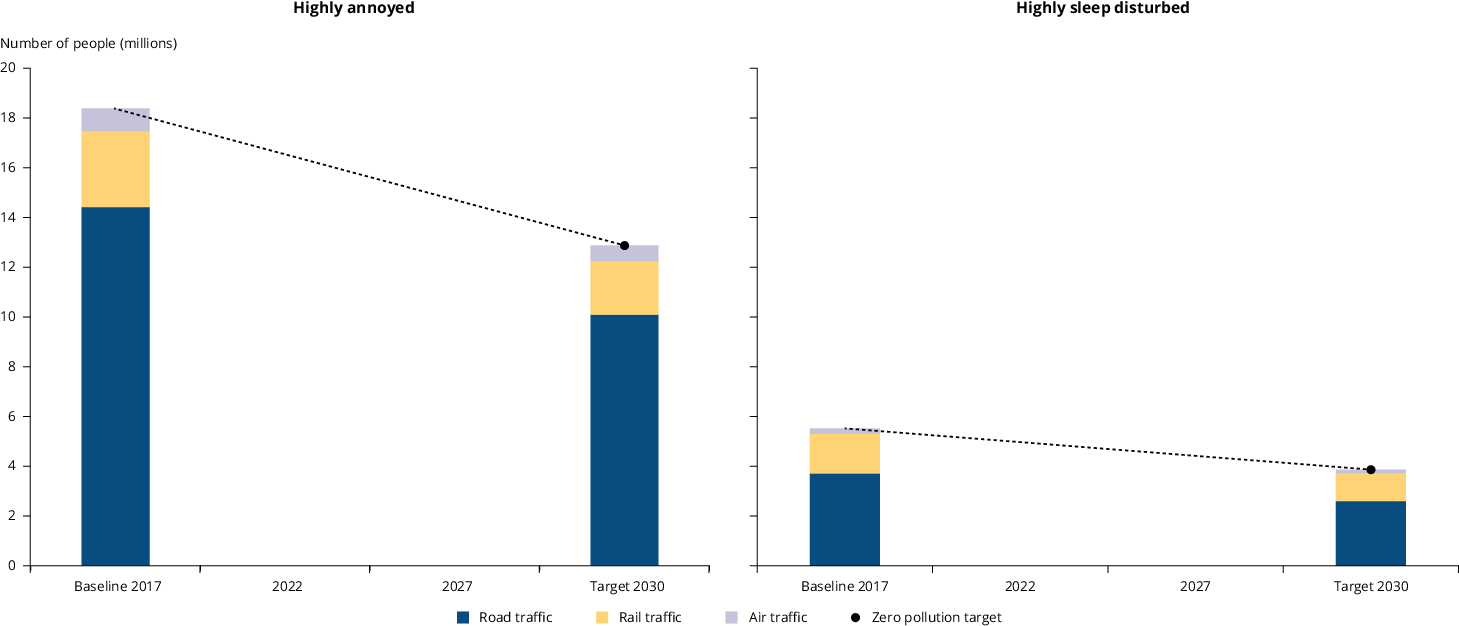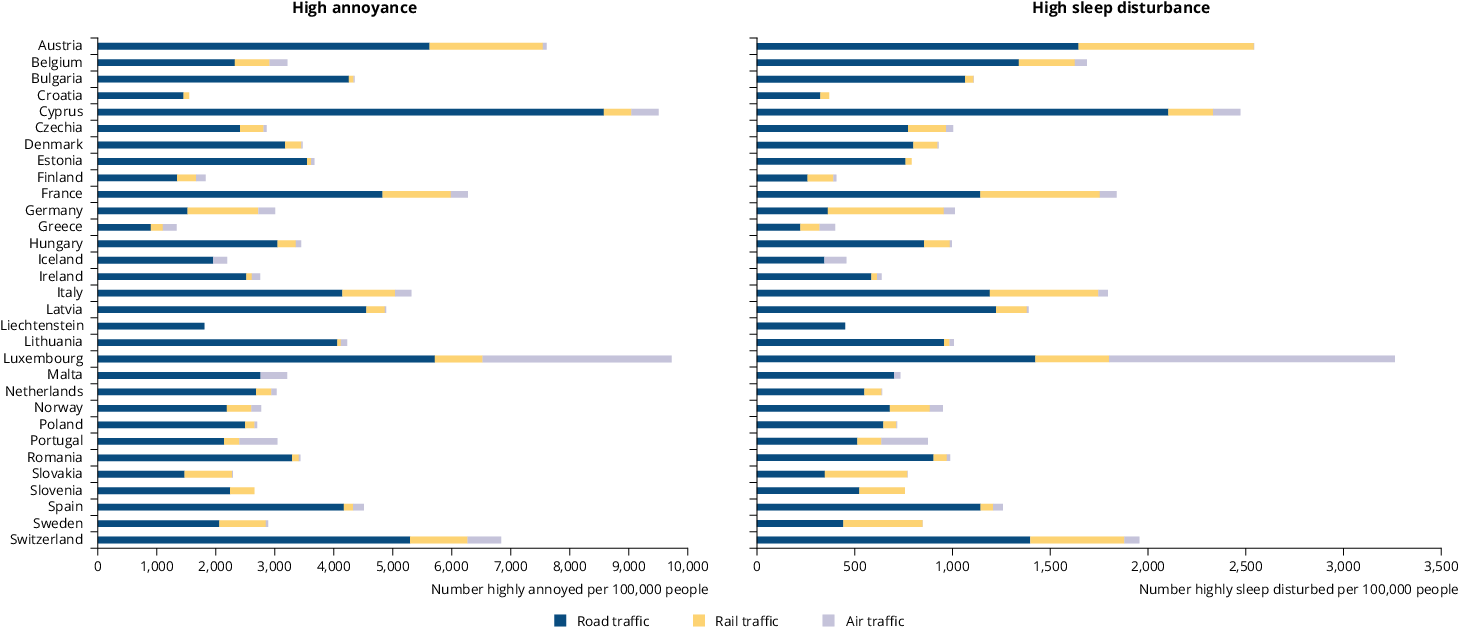All official European Union website addresses are in the europa.eu domain.
See all EU institutions and bodiesLong-term exposure to noise from transport has negative effects on health. Based on data reported in 2017 under the Environmental Noise Directive, it is estimated that at least 18 million people are highly annoyed and 5 million are highly sleep disturbed by long-term exposure to noise from transport. The European Union’s zero pollution action plan aims to reduce the share of people affected by transport noise by 30%. Achieving this will require a significant decline in the number of people highly effected by transport noise.
Figure 1. Estimated number of people highly annoyed and highly sleep disturbed by noise from road, rail and aircraft traffic based on EU Environmental Noise Directive thresholds in the EU-27 and zero pollution target for 2030

Chronic exposure to environmental noise significantly affects physical and mental health and well-being. It can lead to annoyance, sleep disturbance, and cognitive impairment in children, and have negative effects on cardiovascular and metabolic systems. A key target of the European Commission’s zero pollution action plan (ZPAP) is to reduce the number of people chronically disturbed by noise from transport in the EU by 30%, compared with 2017, by 2030 .
Progress towards this target is measured by assessing changes in the number of people highly annoyed and highly sleep disturbed from road, rail and aircraft using population exposure collected under the Environmental Noise Directive (END). High annoyance and high sleep disturbance are considered to be good indicators for measuring adverse health effects of noise, which can lead to more severe health problems. Therefore, they are used as a proxy for chronic disturbance in this indicator.
It was estimated that more than 18 million people were highly annoyed and 5 million were highly sleep disturbed by environmental noise in 2017. Some people are already highly annoyed or sleep disturbed at noise levels below the END reporting thresholds, and the number is likely to be underestimated. The amount of people highly annoyed and highly sleep disturbed by noise in the EU would need to be reduced by 5.4 million and 1.5 million, respectively, to achieve a 30% reduction by 2030, based on the 2017 data.
Road traffic noise is the most prevalent source of environmental noise and a main contributer to the overall effects of noise on health. A large proportion of people highly annoyed and highly sleep disturbed by transport noise live in urban areas of more than 100,000 inhabitants. The majority of the population chronically disturbed by noise are exposed to levels below 60dB during the day-evening-night period (Lden) and 55dB during the night (Lnight).
To achieve the ZPAP objective, measures need to target populations living in areas of lower noise, not only in noise hotspots. This can be achieved by focusing on better urban and transport planning, and reducing motorised transport use.
Additional health impacts from transport noise are presented in table form. The ZPAP also proposes monitoring the impacts of transport noise on human health using disability adjusted life years (DALYs).
Figure 2. Estimated number of people per 100,000 highly annoyed and highly sleep disturbed by noise from road, rail and air traffic in the EEA countries (excluding Türkiye) in 2017

It is difficult to make comparisons between countries of the number of people per 100,000 highly annoyed and highly sleep disturbed by noise from road, rail and air traffic. This is because of the different noise-mapping methodologies used in urban areas. Some countries map all streets in cities, while others only map the busiest streets.
However, it is clear that most countries in Europe have a large proportion of their population suffering from negative health effects due to noise. Road traffic is the main source contributing to high annoyance levels across countries. However, rail traffic is particularly relevant at night in countries with large railway networks, contributing to sleep disturbance.
